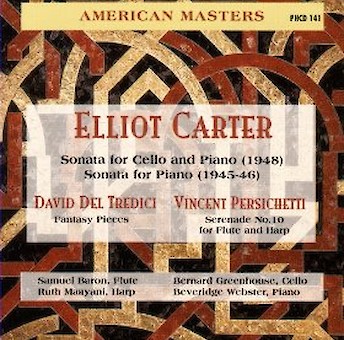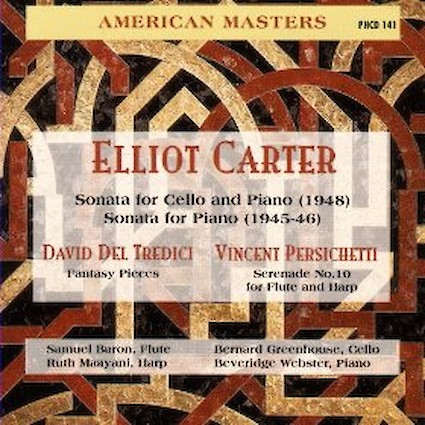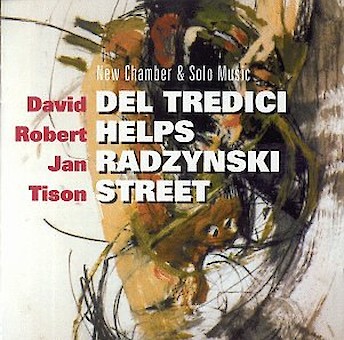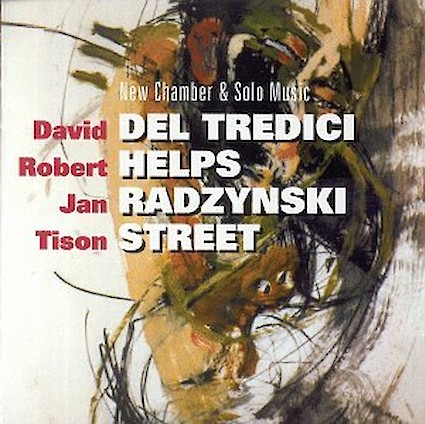The Fantasy Pieces (1959-60) were written at age twenty-two, while I was a graduate student at Princeton University. They began in response to composer-professor Earl Kim's suggestion that I try writing some twelve-tone music. Each of the pieces does, in fact start with a tone row. However, my ear—quite differently inclined—led me down another, more tonal, path that finally ended far from dodecaphony, on an unresolved dominant seventh chord.
The four pieces are highly virtuosic and were written at a time when my piano-playing career was in full flower. The first two are delicate and kaleidoscopic, the third (...Diabolique) is demonic, and the last (and longest) is, by contrast almost Wagnerian in its tonal outpourings.
The pianist Alan Marks describes Fantasy Pieces as follows: "... a set of four brief impressions that are in every sense fantastic: intensely focused emotional expressions of wildness, dreaminess, nervousness or spaciousness. What is important in each piece is the gesture— the specific notes seeming to exist secondarily to the impulse of the moment. These impulses rarely occur in strict rhythm; a hesitation will precipitate a sudden rush which may be sustained or bum out in an instant. This ebb and flow of the rhythm gives the music its improvisatory flavor. As brief as each movement is—as in Webern's music—it is highly expressionistic and structurally bound by only two or three ideas.
The pieces are dedicated to four composer/performer friends (in order): Stephanie Shehatovitch, Earl Kim, Jules Langert, and Robert Helps.
"Del Tredici's four "Fantasy Pieces" (1960) are early works written in the 12-tone manner before he went through a critical change to a largely tonal idiom. Regardless of the different manner, the quality, the voice of the composer and his romantic outlook, the formal integrity all sound like Del Tredici. The moods are intense, the pieces concentrated, almost aphoristic, but the character of each is strong, expressionist in ways that are reminiscent of Schoenberg, as the program noted. The third Fantasy has a driving motoric force, is angry and assertive. The fourth is the finest, and already, in 1960, reveals Del Tredici's nostalgic referential manner. Wagner could be heard in the first piece, suggestions of Brahms and others in Del Tredici's pianistic experience in the fourth, with Wagner and Tchaikovsky coloring the fantasy."
The present disc includes the String Trio (1959) again played by members of Spectrum Ensemble Berlin, and the four Fantasy Pieces for piano (1960), played by the composer. Here, as in such contemporaneous pieces as the Scherzo for piano four-hands (also 1960), the expressive thread that runs through all Del Tredici's music is much in evidence, despite the outer trappings of serialism and other modernist creeds.
David Del Tredici has made his name in even more elaborate romantic recreations based on Lewis Carroll. Iin his early days, however, he was dazzled by Schoenberg, as the String Trio (1959) and Fantasy Pieces for Piano (1960) demonstrate. The former is inspired by Schoenberg's own trio, the latter by the distilled essence of 12-tonal gnomic utterance.
"The other piece by Del Tredici was that rarity in his work — an instrumental composition. (His obsession with song and Joyce poems may be explained by his lyrical and romantic bias.) 'Fantasy Pieces' for piano solo is announced with that most ambiguous interval, the augmented fourth. (A recurrent motive in Del Tredici's work: It is used as a harmonic interval in the Joyce song, "She Weeps Over Rahoon.")The piano pieces, played with dynamic, sweep by the com poser, are most furious In the third piece, most operatic In the final "Largo," which "sang" Its middle line in sustained lyricism against upper register piano activity and a steady bass part- The feeling Is of Tchaikovsky, and Wagner; and if the music sounds like Berg, It Is no wonder we keep awaiting a direct quote from 'Tristan.'"
The four Fantasy Pieces paint a portrait of an engaging young artist- naturally musical, a prodigious pianist endowed with taste, imagination, and an unstoppable lyricism. The pieces were composed when Del Tredici was only 22, just out of college and starting graduate school one year after his life-changing meeting with Darius Milhaud at Aspen, where the elder master encouraged the student to pursue composition professionally. The pieces are overtly romantic, forming an arc on increasing intensity which culminates in the splendidly expansive transcendent Largo. Here every register pulsates with materials in different tempi, rockslides of sound cascade from one end of the keyboard to the other. All the pieces are concise essays in extremes of imagination, distilling wit, energy, and excess transformed into precise musical expression.
Recordings (2)


Chamber Music of Elliott Carter, David Del Tredici and Vincent Persichetti
1998, Phoenix USAWorks
Performers
- George Bennete, piano


New Chamber & Solo Music
1995, CRI/New World RecordsWorks
Performers
- Spectrum Ensemble Berlin
